Are you struggling to find the right fitness exercise that fits your needs? Aerobic exercise is a great way for improving health and energy levels.
Aerobic exercise, also known as cardiovascular exercise, involves rhythmic and repetitive movements that increase your heart rate and breathing for an extended period. Common examples include walking, jogging, cycling, swimming, dancing, and group classes such as Zumba or cardio-kickboxing.
This blog will help you explore different types of aerobic workouts and their benefits.
Keep reading to discover which one suits you best!
Key Takeaways
- Aerobic exercises like walking, swimming, running, and cycling improve heart health, boost stamina, and help manage weight. Just 30 minutes daily can lower the risk of heart diseases significantly.
- Walking is low-impact and suitable for beginners or injury recovery. Running burns calories faster but may stress joints more. Choose based on fitness level.
- Swimming engages multiple muscle groups while protecting joints, making it great for all ages. Cycling strengthens leg muscles and improves cardiovascular fitness over time.
- Dancing as an aerobic activity combines fun with calorie-burning benefits (200–600 calories/hour). It also reduces stress and enhances mood.
- Beginners should start slow with low-impact activities like light walking or cycling, increase intensity gradually, and focus on proper form to avoid injuries.
Popular Types of Aerobic Exercise
Walking
Low-impact, suitable for any fitness level, helps improve heart health and stamina.
Jogging or Running
Higher intensity, burns more calories, boosts cardiovascular fitness, and mood.
Cycling
Great for cardiovascular health and leg strength; stationary bikes provide joint-friendly options.
Swimming
Full-body workout, ideal for those with joint issues or injuries.
Dancing & Group Classes (e.g., Zumba)
Improve coordination, mood, and overall fitness; add a social element.
Cardio Circuit Training
Combines aerobic and strength movements, maximizing heart health and toning muscles.
Elliptical or Stair Climbing
Low-impact machines; useful for those worried about joint stress.
How to Choose the set of Best Aerobic Exercise
The best aerobic exercise depends on your preferences, fitness goals, physical abilities, and access to equipment or facilities. Key factors in making your choice include:
Enjoyment
Choose an activity you like, as you’re more likely to stick with it.
Goals
Cardio for heart health? Weight loss? Mental well-being? Find a match for your objective.
Intensity Level
Beginners should start with moderate intensity (e.g., brisk walking), while advanced exercisers may prefer running or HIIT circuits.
Physical Conditions
Consider any joint issues, chronic conditions, or injuries. Swimming and cycling are gentler on joints than jogging.
Accessibility
Pick an exercise you can easily do regularly—at home, outside, or in a gym.
Variety
Mixing activities (e.g., walking one day, swimming the next) helps avoid boredom and injury risk.
Benefits of Aerobic Exercise
Regular aerobic exercise offers numerous health advantages:
Improves heart and lung health
Helps manage weight and boosts metabolism
Reduces risk of many chronic diseases (diabetes, hypertension, heart disease)
Elevates mood, lowers anxiety, and supports better sleep
Enhances stamina, strength, and cognitive function, supporting independence with age
Quick Guide: Matching Aerobic Exercises to Common Goals
| Goal | Good Choice | Why |
|---|---|---|
| Weight Loss | Running, cycling | High calorie burn |
| Joint Health/Injury Risk | Swimming, elliptical | Low-impact, gentle on joints |
| Social Connection | Group classes, dancing | Fun, community support |
| Beginner | Walking, swimming | Easy start, adaptable to fitness level |
| Variety | Mix walking, cycling, swimming | Prevents boredom and injury |
Bottom Line
There’s no single best aerobic exercise for everyone. The ideal type is the one you enjoy, aligns with your health needs and goals, and fits comfortably into your life. Starting slowly and steadily, and mixing different activities, will help you stay motivated and healthy in the long run.
SHOP NOW ZAZZLE - CLICK BELOW
Benefits of Aerobic Exercise

Aerobic exercise strengthens your heart and lungs. It helps you feel more energetic and active daily.
How does aerobic exercise improve cardiovascular health?
Aerobic exercise strengthens the heart and improves blood circulation. It helps lower resting heart rate, making the heart pump more efficiently. Activities like swimming or cycling for fitness boost oxygen intake, improving the delivery of nutrients throughout the body.
Regular walking as light aerobics also reduces bad cholesterol while increasing good cholesterol levels.
Daily aerobic workouts help manage high blood pressure by relaxing blood vessels and improving their flexibility. Swimming as cardiovascular exercise can reduce stress on arteries over time, promoting a healthier system overall.
According to experts, “Just 30 minutes of daily cardio lowers your risk of heart-related diseases significantly.”.
Which aerobic exercise is most effective for cardiovascular health
The most effective aerobic exercise for cardiovascular health is running or jogging, according to multiple sources comparing common aerobic options like running, swimming, cycling, and brisk walking. Research highlights that:
Running
Running consistently leads to the highest improvements in key cardiovascular markers, including VO2 max (a crucial measure of how much oxygen your body can use during intense cardio activity), heart function, and reductions in heart disease risk.
Elite runners generally achieve higher VO2 max scores than elite swimmers or cyclists, due to the fast-paced, high-impact nature of running.
Cycling and swimming
These are both are excellent alternatives—especially for those with joint concerns—offering substantial improvements in heart health with lower impact.
Brisk walking
This also provides significant cardiovascular benefits, especially for beginners or those with health limitations, but the benefits are greatest as intensity increases (progressing toward jogging or running).
Ultimately, any aerobic exercise done consistently and at a sufficient intensity is highly beneficial for cardiovascular health. However, running and jogging, performed with proper progression and safety, are considered most effective for maximizing heart health, cardiovascular endurance, and VO2 max. If injury risk or joint issues are a concern, cycling or swimming provide comparably excellent heart benefits with less injury risk.
What Are VO₂ and VO₂ Max?
VO₂ is shorthand for “volume of oxygen.” It refers to the amount of oxygen your body consumes during exercise. Measuring VO₂ at rest and during exercise helps determine how efficiently your body uses oxygen to generate energy for movement and day-to-day functions.
VO₂ Max is the maximum volume of oxygen your body can absorb and use during intense or maximal exercise. It’s typically measured as milliliters of oxygen per kilogram of body weight per minute (ml/kg/min). VO₂ max is considered the gold standard metric for aerobic capacity and cardiorespiratory fitness.
Why Is VO₂ Max Important in Aerobic Exercise?
Indicator of fitness
VO₂ max provides an objective measure of your physical fitness. A higher VO₂ max means your heart and lungs supply blood to your muscles more effectively, and your muscles efficiently use that oxygen for energy in aerobic exercise such as running, swimming, and cycling.
Performance predictor
For endurance athletes (runners, cyclists, swimmers), VO₂ max is a crucial metric used to guide training and performance goals. It denotes how much “hard work” your body can sustain—higher VO₂ max allows athletes to go faster and longer before fatigue sets in, and to recover more quickly after intense efforts.
Health benefits
High VO₂ max levels are associated with lower cardiovascular risk, better longevity, and improved metabolic health. Regular aerobic training that boosts VO₂ max not only improves athletic ability but can also reduce disease risk and increase lifespan.
Personalized training
Knowing your VO₂ max helps you optimize your workouts and track improvement. It’s used to tailor training zones and intensities for both athletes and everyday exercisers.
Efficiency
The higher your VO₂ max, the more efficiently your body can deliver and utilize oxygen, which translates into greater endurance and energy during aerobic activities.
How the Body Uses Oxygen
-
Your lungs absorb oxygen and send it into your bloodstream.
-
The heart pumps this oxygen-rich blood to your muscles.
-
Muscles use oxygen to produce ATP (adenosine triphosphate), the primary energy source for muscle contraction.
-
The more oxygen your muscles can use (“VO₂ max”), the more energy they produce, supporting longer and more intense aerobic exercise.
VO₂ and VO₂ max measure the body’s ability to take in, transport, and use oxygen during exercise, directly reflecting your aerobic fitness and health. Improving your VO₂ max through targeted aerobic exercise leads to greater endurance, better performance, and enhanced overall cardiovascular health.
If VO2 is so important in aerobic exercise, how can I improve it?
To increase VO₂ max, the most effective training methods focus on a combination of endurance (steady-state) exercise and high-intensity interval workouts:
Interval Training (HIIT)
Alternate periods of high-intensity exercise (near max effort, 90–95% of your maximum heart rate) with lower-intensity recovery periods.
Example protocols:
4×4 Interval: Four minutes at high intensity (90–95% max heart rate), followed by three minutes of active recovery (70% max heart rate). Repeat four times.
15×15 Interval: Fifteen seconds of all-out sprinting, then 15 seconds of recovery, repeated for a total session of 45–50 rounds.
Endurance Training
Long, steady runs or rides at a lower intensity (zone 2, around 60–70% max heart rate), done for 30–60 minutes or more.
Builds your aerobic system by allowing you to exercise longer and more often with less recovery time needed.
Sprint Interval Training (SIT)
Short sprints (20–30 seconds) at maximum effort, followed by longer recovery periods.
Pushes your body above your VO₂ max for brief intervals, making your cardiovascular and muscular systems adapt quickly.
Combined Approach
Balance high-intensity intervals with endurance runs each week.
Many coaches suggest 2–3 interval or HIIT workouts weekly, with the remainder devoted to steady-state sessions.
Progression Over Time
As you get fitter, gradually increase the intensity, duration, or number of intervals, or the length of your endurance sessions to keep challenging your system.
Key Points:
HIIT and interval training are proven to increase VO₂ max faster and more efficiently than long slow distance alone.
Endurance (steady-state) work remains important for overall aerobic base and recovery.
Listen to your body; adjust frequency and intensity to avoid overtraining.
These methods together help you raise your VO₂ max, increasing your capacity for aerobic exercise and sports performance
How does aerobic exercise help with weight management?
Aerobic exercise burns calories and helps create a calorie deficit, which aids in weight loss. Activities like walking, jogging, or swimming increase the heart rate and boost energy expenditure.
Walking for weight loss is effective because it’s low-impact yet burns significant calories over time. Running ranks among exercises that burn the most calories per session due to its intensity.
Swimming as cardio exercise also works well by engaging multiple muscle groups while burning fat.
Consistent aerobic workouts improve metabolism, making it easier to maintain a healthy weight long-term. Cardiovascular activities regulate appetite by balancing hunger hormones like ghrelin and leptin.
Cycling for weight loss can be highly efficient since it combines endurance with steady calorie-burning rates during different cycling exercises. Enjoyable types of aerobic exercise such as dancing encourage regular participation, making sticking to weight management goals easier.
How can aerobic exercise enhance mood and mental health?
Losing weight through aerobic activity can also lead to improved mental health. Regular cardio exercises like running, walking, or swimming release endorphins. These chemicals naturally boost mood and help reduce stress and anxiety.
Cardio enhances sleep patterns and focus by increasing blood flow to the brain. Exercises like cycling or dancing provide enjoyable ways to stay active while combating feelings of depression.
Morning jogging and outdoor aerobic exercise create an encouraging start to the day for overall well-being.
How does aerobic exercise boost stamina and energy levels?
Aerobic exercise trains your body to use oxygen more efficiently, improving stamina and energy levels. Activities like jogging in the morning or cycling strengthen your heart and lungs, allowing them to deliver oxygen-rich blood faster during physical activity.
Exercises such as swimming for cardio or walking as effective light cardio boost endurance by increasing muscle efficiency over time. Consistent effort helps reduce fatigue during both workouts and daily tasks, making you feel more energized throughout the day.
Types of Aerobic Exercises
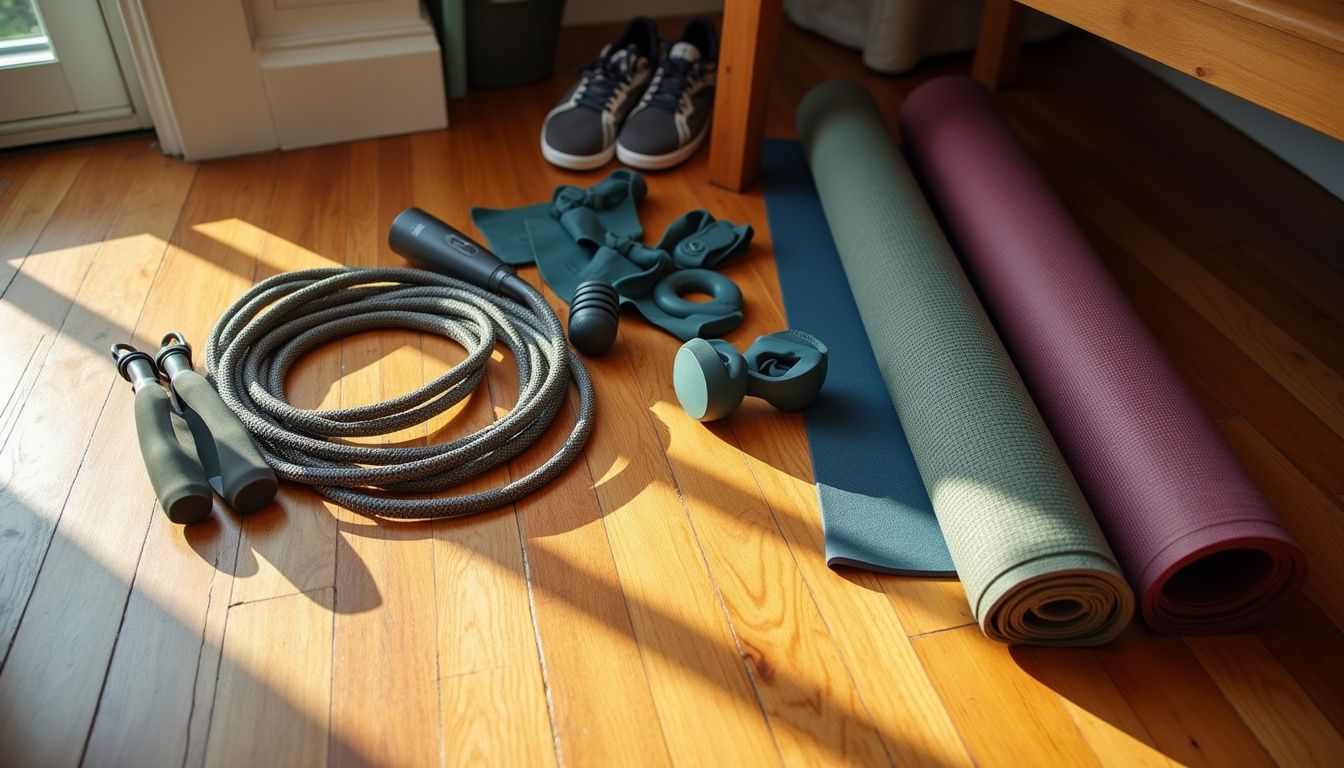
Explore different activities that keep your heart pumping and make workouts exciting!
https://www.youtube.com/watch?v=a44ayeoSfKM
What are the benefits of walking as aerobic exercise?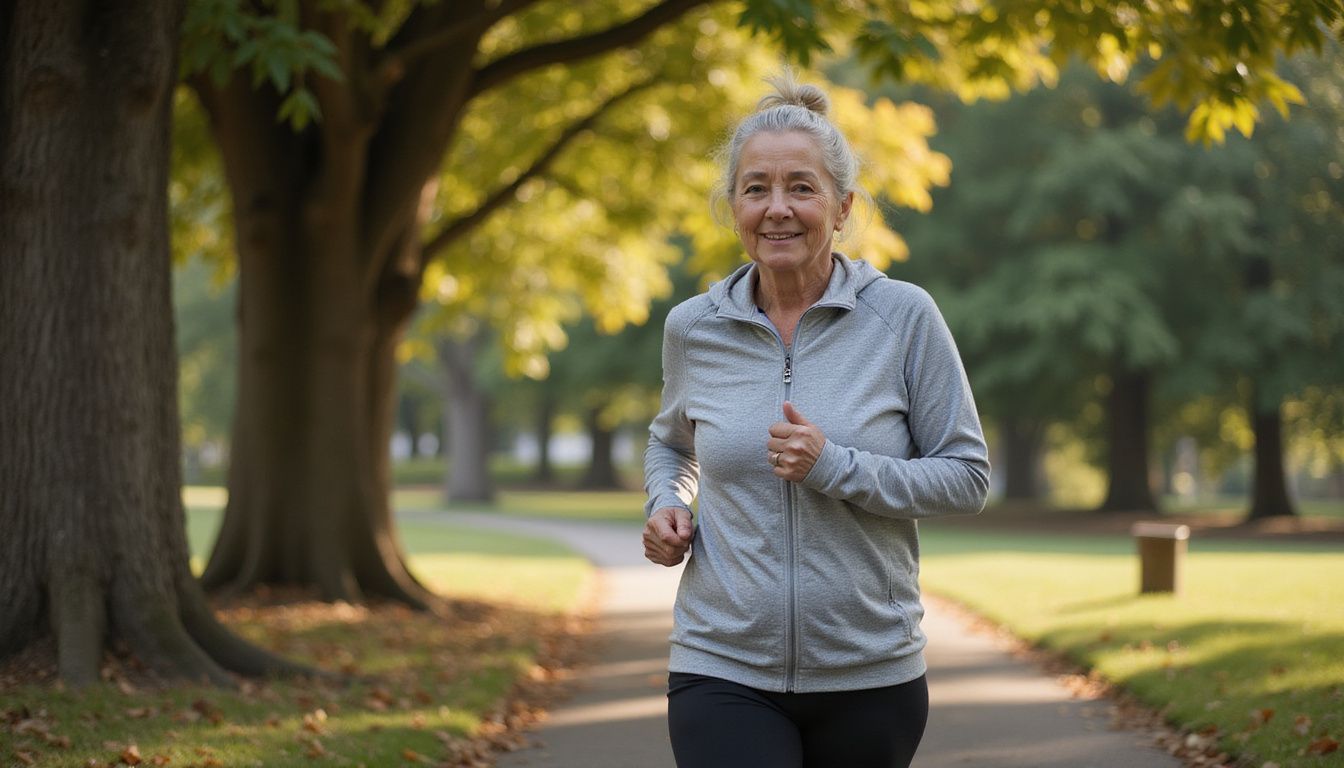
Walking improves cardiovascular health by increasing heart rate and promoting better blood circulation. It strengthens the heart and lowers risks of conditions like high blood pressure, stroke, or heart disease.
Walking as a low-impact aerobic exercise is suitable for most people, including beginners or those recovering from injuries.
This activity helps with weight management by burning calories steadily over time. A brisk 30-minute walk can burn around 150 calories depending on speed and body weight. Morning walks are especially effective in boosting energy levels and metabolism throughout the day.
Walking outdoors also enhances mental well-being by reducing stress while offering an enjoyable way to stay active.
How effective is running for aerobic fitness?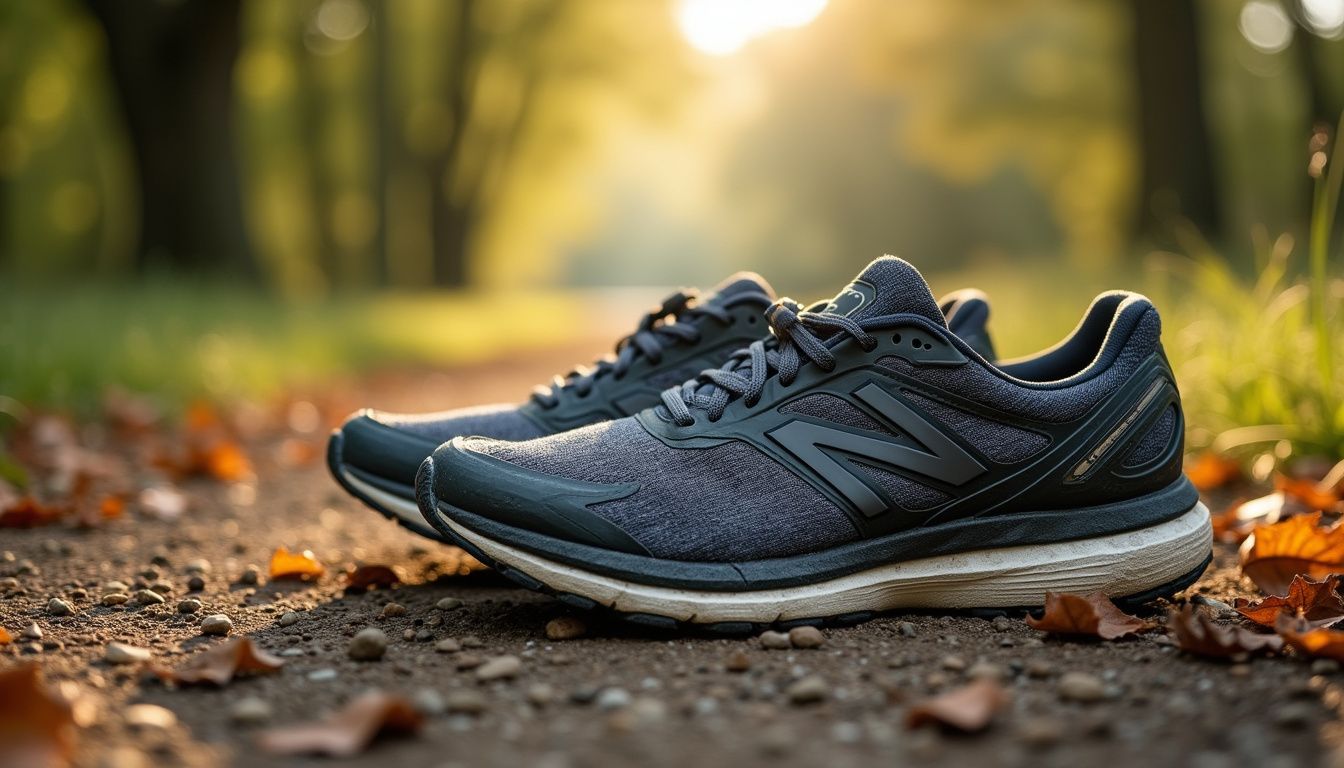
Walking may offer a gentle aerobic benefit, but running elevates cardiovascular fitness significantly. It fortifies your heart and lungs while promoting better blood flow. Consistent running improves endurance and burns more calories than numerous other aerobic exercises, making it a great option for weight control.
This calorie-burning activity tests your endurance and strengthens muscles in your legs and core. Running can boost aerobic capacity rapidly by enhancing oxygen intake during workouts.
It also contributes to bone density due to the weight-bearing aspect of the activity, benefiting long-term health.
Why is swimming a good aerobic workout?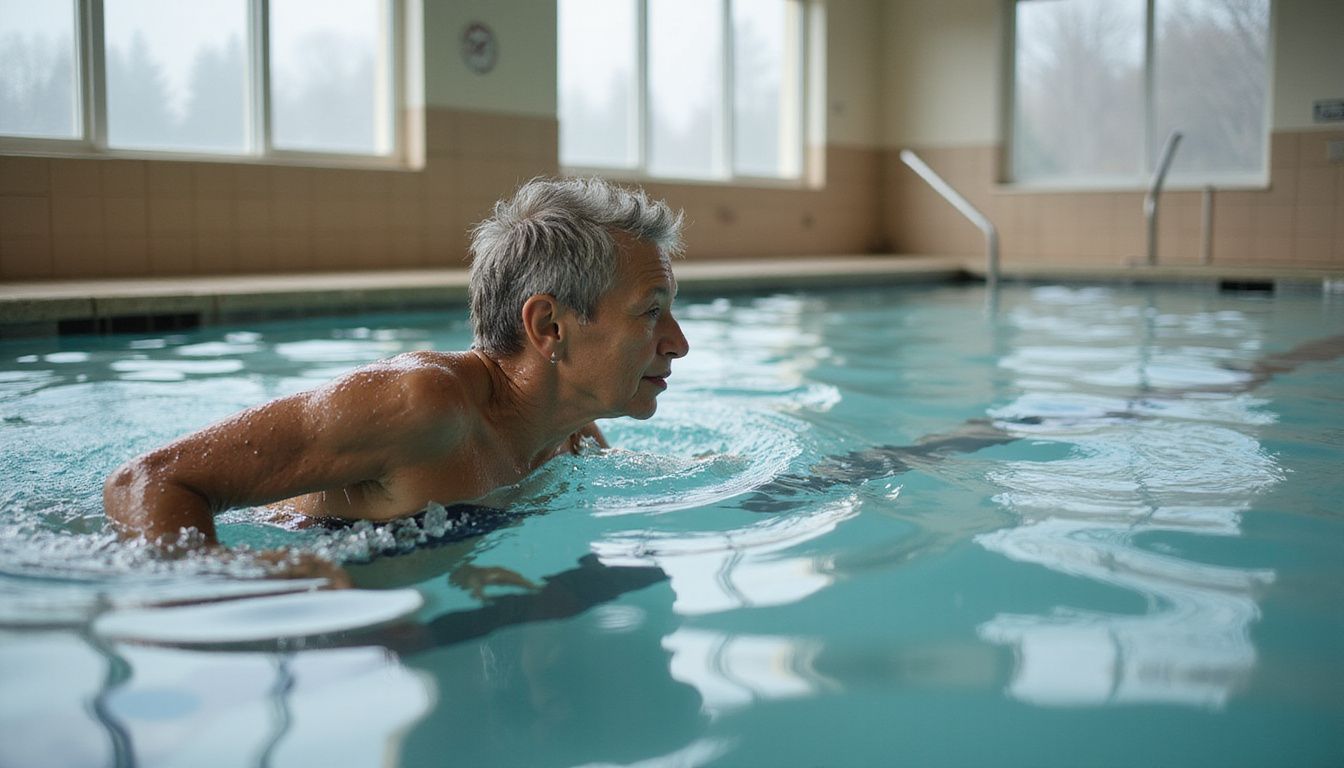
Running strengthens muscles and improves cardiovascular fitness, but swimming offers unique advantages. Like running, it boosts lung capacity and promotes heart health.
Swimming engages the whole body without putting stress on joints. It burns calories efficiently while building endurance. Water resistance tones muscles naturally, making it an effective aerobic workout for all ages.
How does cycling contribute to aerobic health?
Swimming works wonders for aerobic health, but cycling offers its own incredible benefits. Cycling helps improve cardiovascular fitness by increasing your heart rate over sustained periods.
This strengthens the heart and improves blood circulation.
Pedaling engages large muscle groups like the legs, which boosts oxygen delivery throughout your body. It burns calories effectively, helping with weight management and improving endurance over time.
Regular cycling can lower LDL cholesterol while raising HDL levels to protect long-term heart health.
Can dancing be considered effective aerobic exercise?
Of course it can! Dancing can be an enjoyable aerobic workout that improves health and fitness. It raises your heart rate, enhances stamina, and helps burn calories. Depending on the intensity of movements, dancing can torch 200 to 600 calories per hour.
High-energy styles like Zumba or hip-hop maximize calorie burning.
This activity improves cardiovascular health by boosting circulation and oxygen flow. Dancing also strengthens muscles, increases balance, and enhances flexibility. As a form of outdoor cardio workout or indoor exercise, it suits various preferences.
It is one of the most suitable aerobic activities for women seeking fun ways to stay active while reducing stress levels too!
Choosing the Right Aerobic Exercise for You

Find an aerobic exercise that fits your goals, lifestyle, and preferences to stay motivated.
Selecting an aerobic exercise that fits your goals, lifestyle, and personal preferences can significantly impact your long-term fitness and health. Aerobic exercise—often called “cardio”—is any activity that raises your heart rate and breathing for a sustained period, improving cardiovascular health and VO2 max.
Key Considerations for Choosing an Aerobic Exercise
Personal Enjoyment
The most effective exercise is one you enjoy and can stick with regularly.
Fitness Goals
Consider your targets: are you looking to improve heart health, lose weight, increase endurance, or train for a specific sport?
Physical Limitations
Assess any joint issues, injuries, or chronic conditions (e.g., bad knees, asthma).
Equipment and Accessibility
Think about what’s practical based on your location, available equipment, and climate—home gym, outdoors, or gym facility.
Time Commitment
Some exercises fit into short, intense sessions (like HIIT), while others naturally require longer periods (like cycling or swimming).
Social Preferences
Decide if you prefer solo activities, group classes, or team sports.
Common aerobic exercises, outlining their unique benefits.
| Exercise | Benefits | Special Considerations |
|---|---|---|
| Brisk Walking | Low-impact, accessible, easy to maintain | Lower calorie burn vs. higher-intensity activities |
| Jogging/Running | Improves endurance, burns significant calories, boosts cardiovascular health | Higher joint stress, may require proper footwear and surfaces |
| Cycling | Low-impact, strengthens lower body, outdoors or stationary options | Need for equipment or gym; outdoor safety considerations |
| Swimming | Full-body workout, very low-impact, ideal for joint health | Pool access required, technique learning for beginners |
| Rowing | Full-body, low-impact, excellent for both strength and endurance | Access to rowing machine or water; technique matters |
| Dancing | Fun, improves coordination and aerobic fitness | Group class or video guidance may help beginners |
| Jump Rope | High-intensity, portable, improves agility and coordination | High joint impact; start gradually |
| Group Fitness Classes (e.g., Zumba, Step Aerobics) | Social, motivating, structured sessions | May require fitness center or online classes |
| Hiking | Engages core/lower body, outdoor scenery, mental health benefits | Terrain and weather dependent |
| HIIT (High-Intensity Interval Training) | Quick, effective, boosts fitness and burns calories | Demanding; not ideal for all fitness levels or those with injuries |
How to Choose a preferred Aerobic Exercise
Experiment: Try several types over a few weeks. Notice which you look forward to versus which you dread.
Mix It Up: Rotate activities to prevent boredom and overuse injuries.
Start Easy: If new to cardio, start with low-impact options and gradually increase duration and intensity.
Set Achievable Goals: Tracking progress—whether it’s distance, steps, or workout frequency—can boost motivation.
Maximizing Results
Consistency (3–5 sessions per week) is key to noticeable improvements.
Incorporate proper warm-ups and cool-downs.
Pair aerobic sessions with strength training for overall fitness.
Sample Beginner Aerobic Routine
Brisk walk (20–30min)
Cycling on flat terrain (15–30min)
Dance workout video (20–30min)
Swimming laps at a moderate pace (15–20min)
All of these can be adjusted in intensity and duration as your fitness improves.
The “best” aerobic activity is the one you enjoy—and will do—regularly. Don’t be afraid to try new things and adapt as your interests and needs evolve.
How do you assess your fitness level before starting?
Start by testing your basic endurance with a short cardio activity like walking or jogging. Observe how quickly you tire and recover after stopping. Monitor your heart rate during exercise and rest to gauge cardiovascular health.
Evaluate flexibility through simple stretches, such as touching your toes. Test strength by performing bodyweight exercises, like push-ups or squats, to see your limits. Understanding these factors helps you choose safe aerobic workouts suited for your fitness level.
What health goals should influence your choice of aerobic exercise?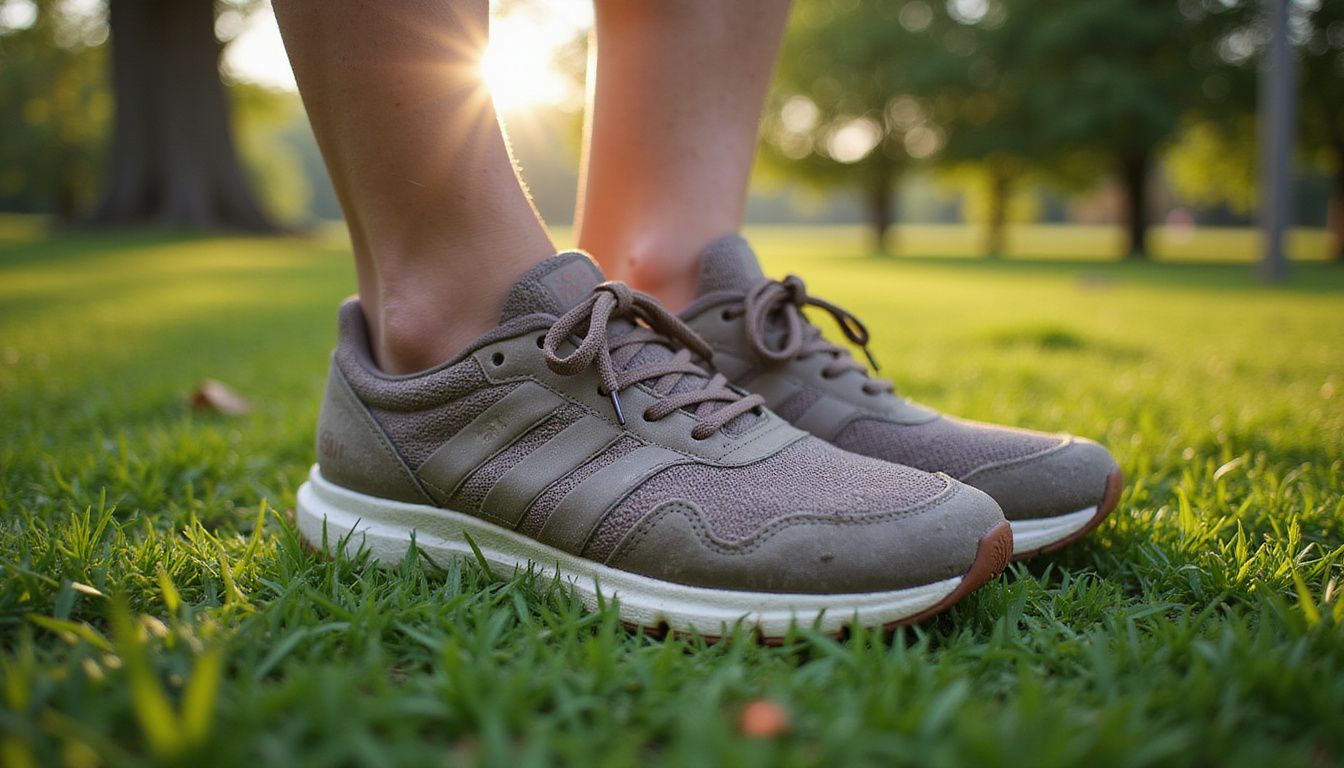
Health goals like weight loss, improving cardiovascular health, or boosting energy levels can guide your exercise choice. Aerobic exercises such as running and cycling are great for burning calories quickly and managing weight effectively.
For those seeking enhanced heart health, brisk walking or swimming offers low-impact options with high benefits.
Mental well-being is another key factor in choosing an activity. Dancing helps reduce stress while adding an enjoyable twist to fitness routines. Morning jogging can lift moods due to the release of endorphins and promote better stamina over time.
Select activities that align with personal goals to stay motivated and consistent in your routine.
How to evaluate your available time and resources?
Assess how much free time you have each week. Consider your work, family, and other commitments before choosing aerobic exercise activities. For example, if mornings are quiet for you, the best time for a morning walk might fit well into your schedule.
Check what resources are available to you. If you own a bike or live near cycling paths, cycling to lose weight can be an effective option. Those with access to swimming pools can explore swimming as a great way to improve aerobic health.
Why should personal preferences matter in exercise selection?
Personal preferences play a big role in choosing enjoyable aerobic workouts. Picking activities you enjoy, like cycling or dancing, makes it easier to stay consistent. If you dislike running but love swimming, you’re more likely to stick with swimming as part of your routine.
Choosing what suits your lifestyle helps build motivation and long-term habits. Some may prefer outdoor cardio workouts like morning jogging for fresh air, while others might favor indoor options like treadmill walking.
Understanding your fitness level and interests allows smoother progress toward health goals. Next, explore the differences between walking and running for aerobic benefits.
Comparison of Popular Aerobic Exercises
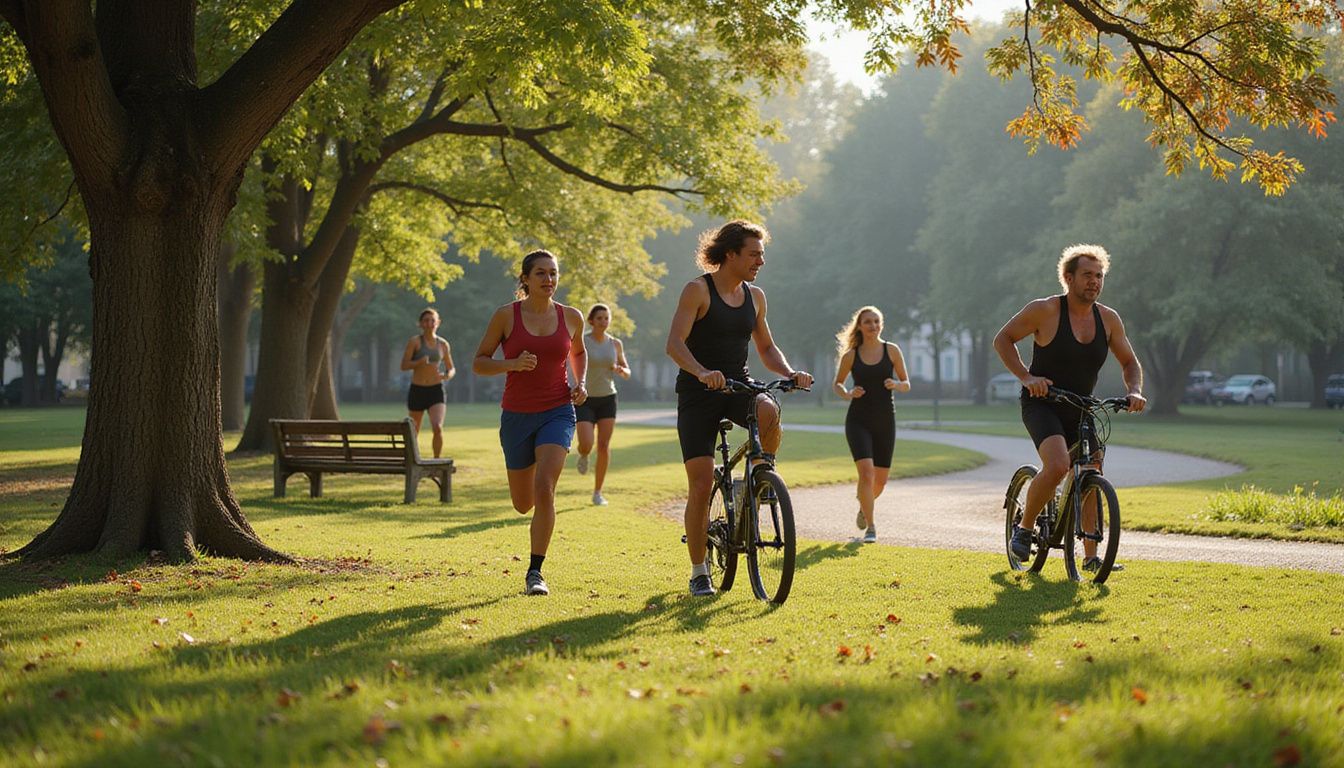
Different aerobic exercises offer unique health benefits. Compare their impact on fitness, calorie burn, and convenience to find your best fit.
What are the differences between walking and running?
Walking is a low-impact aerobic exercise that puts less stress on joints. It suits beginners, older adults, or those recovering from injuries. Walking burns fewer calories compared to running but still aids in weight management and improves cardiovascular health.
Running boosts calorie burn and builds endurance faster than walking. It strengthens muscles, increases bone density, and is ideal for higher-intensity workouts. Running has a greater impact on joints, so it may not be suitable for everyone.
How does swimming compare to cycling for aerobic fitness?
Swimming and cycling are effective aerobic exercises but work the body in different ways. Swimming involves almost every muscle group while being gentle on joints. This makes it an excellent choice for people with joint pain or those recovering from injuries.
The water’s resistance also helps build strength and endurance while improving cardiovascular health.
Cycling, on the other hand, primarily targets the lower body muscles like quads, hamstrings, and calves. It burns calories efficiently while strengthening leg muscles and improving stamina.
Unlike swimming, cycling can vary in intensity depending on terrain or speed. Both exercises improve aerobic fitness but differ in their focus areas and physical demands.
What are the pros and cons of outdoor vs. indoor activities?
Outdoor activities provide fresh air and natural sunlight, which boost mood and vitamin D levels. They allow you to explore diverse terrains like parks, trails, or beaches, making exercise more enjoyable.
However, they depend on weather conditions, limiting consistency during rain or extreme temperatures.
Indoor activities offer controlled environments that promote consistent workouts regardless of the weather. Gyms provide access to various equipment for aerobic exercises like treadmills or stationary bikes.
On the downside, lack of sunlight can reduce exposure to nature’s health benefits. Choose based on your resources and goals before starting aerobic routines.
Tips for Beginners to Aerobic Exercise
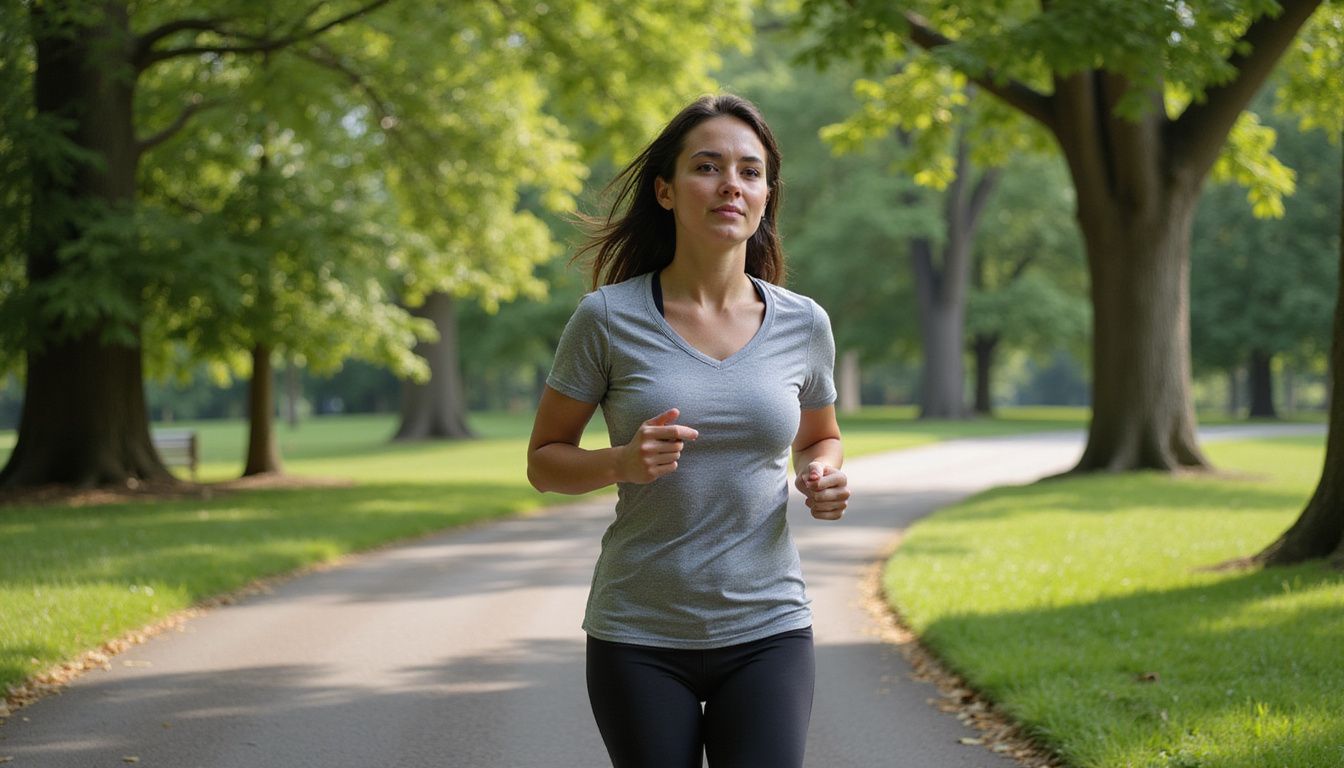
Start slow, stay consistent, and build your fitness over time to enjoy the full benefits of aerobic exercise.
How should beginners start and increase exercise intensity?
Beginner aerobic tips involve starting slow with low-impact activities like walking or light cycling. Aim for 10-15 minutes per session, three times weekly. Gradually increase the duration or frequency as your body adjusts.
Walking can benefit new exercisers by improving stamina without stressing the joints excessively.
Increase intensity by adding intervals into your routine. For example, alternate between brisk walking and a slower pace for short periods. Use aerobic exercises like jogging or dancing to challenge yourself as you build endurance.
Always include recovery days to prevent injuries while progressing steadily to achieve fitness goals.
Why is focusing on proper form and technique important?
Focusing on proper form and technique reduces the risk of injury during aerobic exercise. Incorrect movements can strain muscles, joints, and ligaments. Maintaining good posture while performing activities like running or cycling ensures that the body moves efficiently.
This helps prevent wear and tear over time.
Using correct techniques also boosts results from aerobic workouts for health improvement. For example, engaging core muscles while swimming improves endurance and burns more calories.
Proper alignments in walking or morning jogging reduce stress on lower back and knees. Following safe forms maximizes energy usage without causing unnecessary fatigue.
How to stay consistent while allowing time for recovery?
Set a regular workout schedule to stay consistent. Include aerobic exercises like morning jogging, cycling, or walking in your routine. Start with shorter sessions and gradually increase intensity to avoid burnout.
Prioritize enjoyable activities such as dancing or swimming.
Incorporate rest days to allow muscle recovery and prevent injuries. Alternate between high- and low-impact workouts for balanced progress. Use this time to stretch or try light movement like yoga.
This approach boosts stamina while keeping energy levels steady over time.
Conclusion
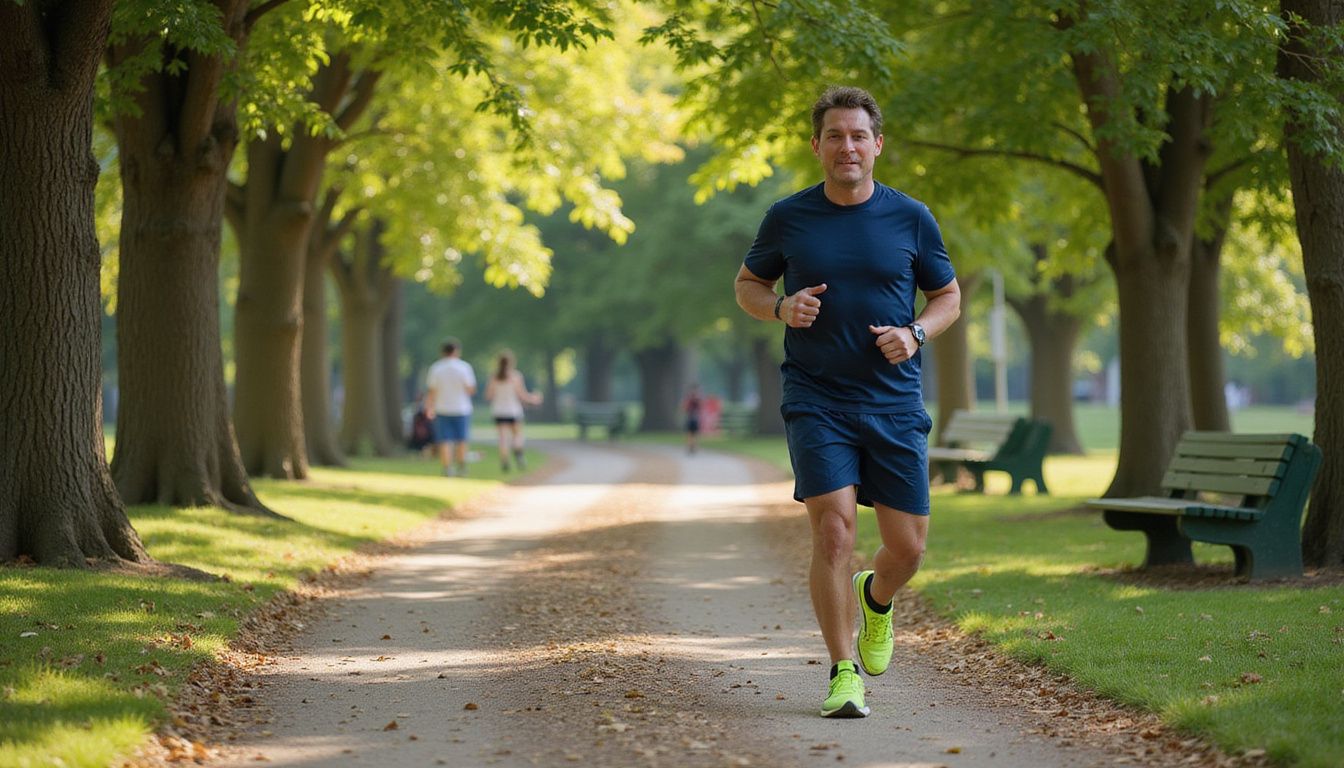
Finding the best aerobic exercise depends on your goals and lifestyle. Choose activities you enjoy to stay consistent. Whether it’s walking, running, or dancing, all options improve health and energy.
Start slow and build up over time for lasting results. Fitness is personal, so pick what suits you best!
FAQs
1. What are the benefits of aerobic exercise for health?
Aerobic exercises improve heart health, help with weight loss, and boost energy levels. They also enhance lung function and reduce stress.
2. What is the difference between aerobic and anaerobic exercise?
Aerobic exercise uses oxygen to produce energy, focusing on endurance activities like jogging or cycling. Anaerobic exercise relies on short bursts of intense effort, like sprinting or weightlifting.
3. Is running better than cycling for burning calories?
Running burns more calories per minute compared to cycling because it requires more effort from your body. However, both are great options depending on your fitness goals.
4. Who is kayaking suitable for as a workout?
Kayaking is ideal for beginners and fitness enthusiasts looking to strengthen their upper body while enjoying outdoor locations like lakes or rivers.
5. When is the best time to walk in the morning?
The best time for a morning walk is early when temperatures are cooler and air quality is better; this helps maximize its health benefits while boosting energy for the day ahead.


 Cart is empty
Cart is empty 







